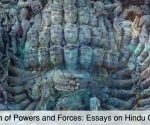A New Exposé of Mother Teresa Shows that She was Worse than We Thought
[She was] named 18 times in the yearly Gallup’s most admired man and woman poll as one of the ten women around the world that Americans admired most. In 1999, a poll of Americans ranked her first in Gallup’s List of Most Widely Admired People of the 20th Century. In that survey, she out-polled all other volunteered answers by a wide margin, and was in first place in all major demographic categories except the very young.
The criticisms of Agnes Gonxha, as she was christened, have been growing for a long time. I wasn’t aware of them until I read Christopher Hitchens’s cleverly titled book, The Missionary Position: Mother Teresa in Theory and Practice, which I found deeply disturbing. The book is polemic at Hitchens’s best, and though the facts were surprising, he was never sued and his accusations were never refuted—nor even rebutted. (You can read excerpts here and here, but I urge you to read the book.) In light of that, I accepted Mother Teresa as a deeply flawed person.
In its “criticism” section of her biography, Wikipedia summarizes the growing opprobrium related to her extreme love of suffering (that is, the suffering of her “patients”), her refusal to provide adequate medical care, her association with (and financial support from) shady characters, and her treatment of her nuns.
Now a paper is about to appear (it’s not online yet) that is apparently peer-reviewed, and that expands the list of Mother Teresa’s malfeasances. Lest you think this is atheist hype, the summary below is from an official press release by the Université de Montréal.
The myth of altruism and generosity surrounding Mother Teresa is dispelled in a paper by Serge Larivée and Genevieve Chenard of University of Montreal’s Department of Psychoeducation and Carole Sénéchal of the University of Ottawa’s Faculty of Education. The paper will be published in the March issue of the journal Studies in Religion/Sciences religieuses and is an analysis of the published writings about Mother Teresa. Like the journalist and author Christopher Hitchens, who is amply quoted in their analysis, the researchers conclude that her hallowed image—which does not stand up to analysis of the facts—was constructed, and that her beatification was orchestrated by an effective media relations campaign.
“While looking for documentation on the phenomenon of altruism for a seminar on ethics, one of us stumbled upon the life and work of one of Catholic Church’s most celebrated woman and now part of our collective imagination—Mother Teresa—whose real name was Agnes Gonxha,” says Professor Larivée, who led the research. “The description was so ecstatic that it piqued our curiosity and pushed us to research further.”
As a result, the three researchers collected 502 documents on the life and work of Mother Teresa. After eliminating 195 duplicates, they consulted 287 documents to conduct their analysis, representing 96% of the literature on the founder of the Order of the Missionaries of Charity (OMC). Facts debunk the myth of Mother Teresa
In their article, Serge Larivée and his colleagues also cite a number of problems not take into account by the Vatican in Mother Teresa’s beatification process, such as “her rather dubious way of caring for the sick, her questionable political contacts, her suspicious management of the enormous sums of money she received, and her overly dogmatic views regarding, in particular, abortion, contraception, and divorce.”
The release levels three types of accusations against mother Teresa and her supporters (quotes are direct, and I don’t mind extensive excerpting since it’s a press release):
1. The woman was in love with suffering and simply didn’t take care of her charges, many of whom fruitlessly sought medical care.
“At the time of her death, Mother Teresa had opened 517 missions welcoming the poor and sick in more than 100 countries. The missions have been described as “homes for the dying” by doctors visiting several of these establishments in Calcutta. Two-thirds of the people coming to these missions hoped to a find a doctor to treat them, while the other third lay dying without receiving appropriate care. The doctors observed a significant lack of hygiene, even unfit conditions, as well as a shortage of actual care, inadequate food, and no painkillers. The problem is not a lack of money—the Foundation created by Mother Teresa has raised hundreds of millions of dollars—but rather a particular conception of suffering and death: “There is something beautiful in seeing the poor accept their lot, to suffer it like Christ’s Passion. The world gains much from their suffering,” was her reply to criticism, cites the journalist Christopher Hitchens. Nevertheless, when Mother Teresa required palliative care, she received it in a modern American hospital.”
2. She was tightfisted about helping others, seequestered money donated for her work, and took money from dictators.
“Mother Teresa was generous with her prayers but rather miserly with her foundation’s millions when it came to humanity’s suffering. During numerous floods in India or following the explosion of a pesticide plant in Bhopal, she offered numerous prayers and medallions of the Virgin Mary but no direct or monetary aid. On the other hand, she had no qualms about accepting the Legion of Honour and a grant from the Duvalier dictatorship in Haiti. Millions of dollars were transferred to the MCO’s various bank accounts, but most of the accounts were kept secret, Larivée says. ‘Given the parsimonious management of Mother Theresa’s works, one may ask where the millions of dollars for the poorest of the poor have gone?’”
3. She was deliberately promoted by BBC journalist Malcolm Muggeridge (a fellow anti-abortionist), and her beatification was based on phony miracles.
.” . .In 1969, [Muggeridge] made a eulogistic film of the missionary, promoting her by attributing to her the “first photographic miracle,” when it should have been attributed to the new film stock being marketed by Kodak. Afterwards, Mother Teresa travelled throughout the world and received numerous awards, including the Nobel Peace Prize. In her acceptance speech, on the subject of Bosnian women who were raped by Serbs and now sought abortion, she said: ‘I feel the greatest destroyer of peace today is abortion, because it is a direct war, a direct killing—direct murder by the mother herself.’
. . . Following her death, the Vatican decided to waive the usual five-year waiting period to open the beatification process. [JAC: As I recall, it took only a year.] The miracle attributed to Mother Theresa was the healing of a woman, Monica Besra, who had been suffering from intense abdominal pain. The woman testified that she was cured after a medallion blessed by Mother Theresa was placed on her abdomen. Her doctors thought otherwise: the ovarian cyst and the tuberculosis from which she suffered were healed by the drugs they had given her. The Vatican, nevertheless, concluded that it was a miracle. Mother Teresa’s popularity was such that she had become untouchable for the population, which had already declared her a saint. “What could be better than beatification followed by canonization of this model to revitalize the Church and inspire the faithful especially at a time when churches are empty and the Roman authority is in decline?” Larivée and his colleagues ask.”
All of these echo, substantiate, and expand the criticisms leveled by Hitchens.
But at the end of the press release, the university (and, I presume, the investigators) offer what I see as a complete sop to those who might be disheartened by the above. I quote directly:
Despite Mother Teresa’s dubious way of caring for the sick by glorifying their suffering instead of relieving it, Serge Larivée and his colleagues point out the positive effect of the Mother Teresa myth: “If the extraordinary image of Mother Teresa conveyed in the collective imagination has encouraged humanitarian initiatives that are genuinely engaged with those crushed by poverty, we can only rejoice. It is likely that she has inspired many humanitarian workers whose actions have truly relieved the suffering of the destitute and addressed the causes of poverty and isolation without being extolled by the media. Nevertheless, the media coverage of Mother Theresa could have been a little more rigorous.”
A “little more rigorous”? Now there’s an understatement!
Yes, perhaps the inspirational effect of Mother Teresa’s work is a theoretical possibility, but has it happened? Is Mother Teresa’s order now actually doing something to cure illness? What’s the evidence that she has inspired people to do something they wouldn’t have done otherwise? Have they found the lost donations?
I will be curious (and a bit surprised) if, when the paper finally comes out, the authors actually provide some evidence that Mother Teresa has had a substantial positive effect, much less a net positive effect (don’t forget her work against abortion). This last bit of the press release is there, I think, to stave off the inevitable criticism that will arise from Bill Donohue and other Catholic cheerleaders when such an idolized religious figure is brought down. But Catholics should be used to that!
One good thing, despite the sop, is that the faithful won’t be able to dismiss this as easily as they could the criticisms of Hitchens. (“He’s just a militant atheist who hates all religious people.”) This is a peer-reviewed paper written by academics, not a hatchet-job written by an atheist with strong opinions.
If there’s one thing that Catholics should have learned by now, it’s that their heroes often have feet of clay. But that’s not surprising in a faith that encourages chastity, sexual repression, and authoritarianism. In Mother Teresa it found perhaps its most bizarre flowering: a woman who actually wanted her charges to suffer because it brought them closer to Jesus.
I ran into Mother Teresa once: we were flying on the same plane, and as I disembarked from the coach section, she appeared right in front of me as she exited from the first-class section. Not even wondering why a woman who professed humility was flying first class, I was elated and gobsmacked, feeling quite fortunate to have run into her. But I had bought into the myth, and that was well before the pushback began.
I will make the Montreal paper available when it’s finally published.
http://conspiracybuzz.info/featured/new-expose-mother-teresa-shows-vatican-even-worse-thought/









